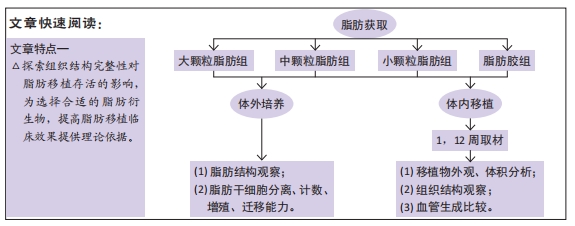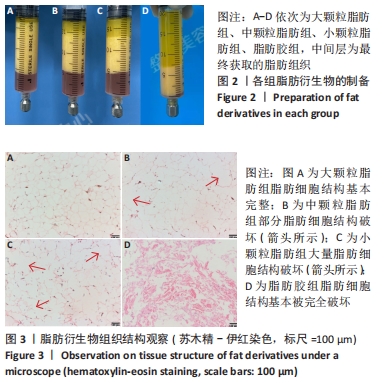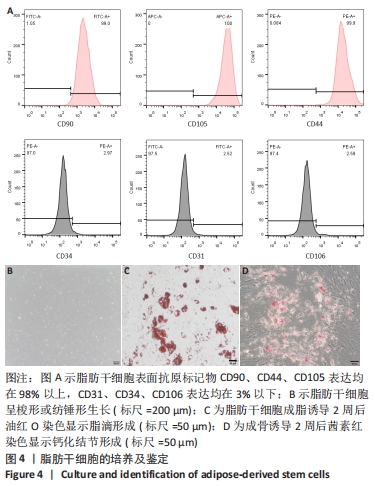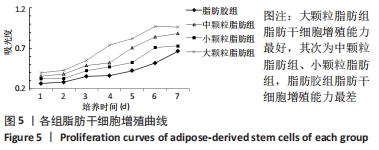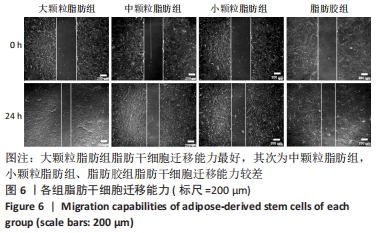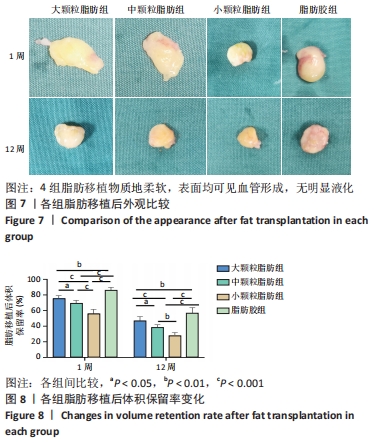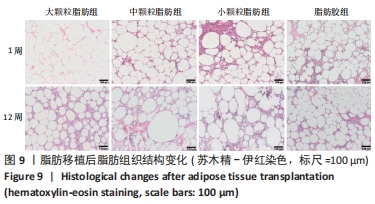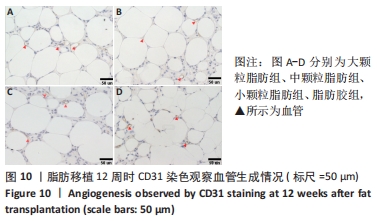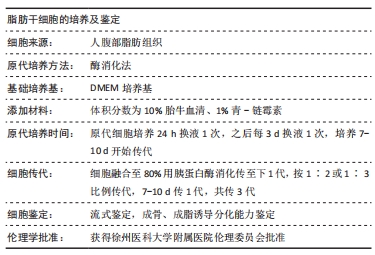[1] UZBAS F, MAY ID, PARISI AM, et al. Molecular physiognomies and applications of adipose-derived stem cells. Stem Cell Rev Rep. 2015; 11(2):298-308.
[2] GARZA RM, PAIK KJ, CHUNG MT, et al. Studies in fat grafting: Part III. Fat grafting irradiated tissue--improved skin quality and decreased fat graft retention. Plast Reconstr Surg. 2014;134(2):249-257.
[3] ILLOUZ YG. Body contouring by lipolysis: a 5-year experience with over 3000 cases. Plast Reconstr Surg. 1983;72(5):591-597.
[4] ZUK PA, ZHU M, MIZUNO H, et al. Multilineage cells from human adipose tissue: implications for cell-based therapies. Tissue Eng. 2001; 7(2):211-228.
[5] PU LL. Mechanisms of Fat Graft Survival. Ann Plast Surg. 2016;77 Suppl 1:S84-86.
[6] KATO H, MINEDA K, ETO H, et al. Degeneration, regeneration, and cicatrization after fat grafting: dynamic total tissue remodeling during the first 3 months. Plast Reconstr Surg. 2014;133(3):303e-313e.
[7] YAO Y, DONG Z, LIAO Y, et al. Adipose Extracellular Matrix/Stromal Vascular Fraction Gel: A Novel Adipose Tissue-Derived Injectable for Stem Cell Therapy. Plast Reconstr Surg. 2017;139(4):867-879.
[8] 周滔.关于不同比例脂肪源性干细胞基质胶混合颗粒脂肪游离移植的实验研究[D].广州:南方医科大学,2018.
[9] 姚尧. Svf-gel:一种高浓度脂肪来源干细胞基质胶的实验研究及临床应用[D].广州:南方医科大学,2017.
[10] HIVERNAUD V, LEFOURN B, GUICHEUX J, et al. Autologous Fat Grafting in the Breast: Critical Points and Technique Improvements. Aesthetic Plast Surg. 2015;39(4):547-561.
[11] ROHRICH RJ, RIOS JL, FAGIEN S. Role of new fillers in facial rejuvenation: a cautious outlook. Plast Reconstr Surg. 2003;112(7):1899-1902.
[12] 易晓林,梁至洁,黎洪棉.纳米脂肪的研究进展及临床应用[J].中国组织工程研究,2019,23(26):4243-4248.
[13] 李发成,程琳.自体脂肪颗粒注射隆乳术305例临床分析[J].中国美容整形外科杂志,2015,26(8):463-465.
[14] GAL S, XUE Y, PU LLQ. What Do We Know Now About Autologous Fat Grafting? Ann Plast Surg. 2019;83(4S Suppl 1):S17-S20.
[15] CRANDALL DL, HAUSMAN GJ, KRAL JG. A review of the microcirculation of adipose tissue: anatomic, metabolic, and angiogenic perspectives. Microcirculation. 1997;4(2):211-232.
[16] KAKAGIA D, PALLUA N. Autologous fat grafting: in search of the optimal technique. Surg Innov. 2014;21(3):327-336.
[17] LUO L, HE Y, CHANG Q, et al. Polycaprolactone nanofibrous mesh reduces foreign body reaction and induces adipose flap expansion in tissue engineering chamber. Int J Nanomedicine. 2016;11:6471-6483.
[18] ETO H, KATO H, SUGA H, et al. The fate of adipocytes after nonvascularized fat grafting: evidence of early death and replacement of adipocytes. Plast Reconstr Surg. 2012;129(5):1081-1092.
[19] FAN Y, BERGMANN A. Apoptosis-induced compensatory proliferation. The Cell is dead. Long live the Cell! Trends Cell Biol. 2008;18(10):467-473.
[20] YUAN Y, GAO J, LIU L, et al. Role of adipose-derived stem cells in enhancing angiogenesis early after aspirated fat transplantation: induction or differentiation? Cell Biol Int. 2013;37(6):547-550.
[21] COLAZZO F, CHESTER AH, TAYLOR PM, et al. Induction of mesenchymal to endothelial transformation of adipose-derived stem cells. J Heart Valve Dis. 2010;19(6):736-744.
[22] 廖选,陈嘉文,黄苏,等.三种不同颗粒脂肪来源干细胞增殖、分化、迁移能力的比较[J].中华整形外科杂志,2019,35(8):796-803.
[23] NGUYEN PS, DESOUCHES C, GAY AM, et al. Development of micro-injection as an innovative autologous fat graft technique: The use of adipose tissue as dermal filler. J Plast Reconstr Aesthet Surg. 2012; 65(12):1692-1699.
[24] LASCHKE MW, MUSSAWY H, SCHULER S, et al. Short-term cultivation of in situ prevascularized tissue constructs accelerates inosculation of their preformed microvascular networks after implantation into the host tissue. Tissue Eng Part A. 2011;17(5-6):841-853.
[25] LI Z, XU F, WANG Z, et al. Macrophages Undergo M1-to-M2 Transition in Adipose Tissue Regeneration in a Rat Tissue Engineering Model. Artif Organs. 2016;40(10):E167-E178.
[26] PU LLQ. Discussion. Improvement of the survival of human autologous fat transplantation by using VEGF-transfected adipose-derived stem cells. Plast Reconstr Surg. 2009;124(5):1447-1449.
[27] VAN DONGEN JA, STEVENS HP, PARVIZI M, et al. The fractionation of adipose tissue procedure to obtain stromal vascular fractions for regenerative purposes. Wound Repair Regen. 2016;24(6):994-1003.
[28] SALGARELLO M, VISCONTI G, RUSCIANI A. Breast fat grafting with platelet-rich plasma: a comparative clinical study and current state of the art. Plast Reconstr Surg. 2011;127(6):2176-2185.
[29] TROJAHN KØLLE SF, OLIVERI RS, GLOVINSKI PV, et al. Importance of mesenchymal stem cells in autologous fat grafting: a systematic review of existing studies. J Plast Surg Hand Surg. 2012;46(2):59-68.
|
